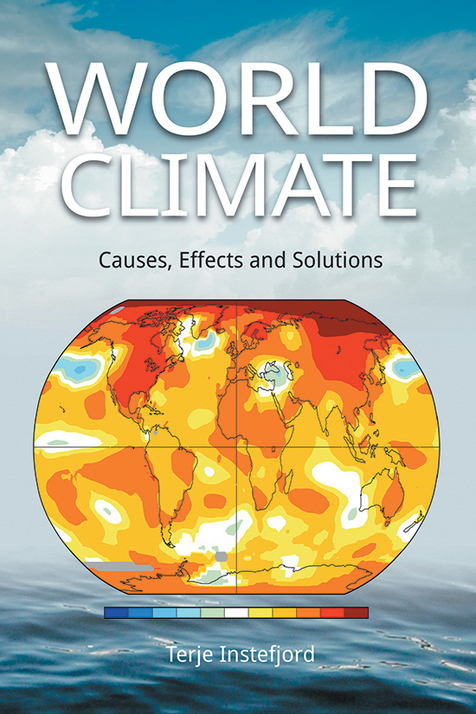In World Climate: Causes, Effects and Solutions by author Terje Instefjord, some of the most recent reports and publications by respected climate experts and organizations are broken down and explained in accessible, yet credible language.
While there is some amount of extrapolation and guesswork in any global model, despite our advanced technology related to this subject, this is not a book of catastrophic rhetoric or partisan leanings. Instead, it is a well-constructed and readable book that sits squarely between a dense governmental report topping hundreds of pages and a concise summary in a news article.
From the World Meteorological Organization report of November 2018 to the UN Emission Gap Report of 2018, this book clearly lays out the situation as it stands today, its historical roots, and risk projections for the future. There are foundational explanations of greenhouse gases, their longevity, and the history of carbon emissions, which may seem basic to some readers, but it is also information that isn’t readily or widely discussed in most media outlets. Instefjord then layers these simpler topics on our present-day global context, explaining how our current activity and mitigation tactics remain insufficient.
Depending on where you are in the world, your nation’s responsiveness towards the climate threat may vary, but there are some points that are no longer being debated. Sea levels are rising, along with temperatures, and whether it is a natural part of an eons-long cycle, or a manmade problem driven by the Industrial Revolution and excessive fossil fuel use, it is a problem that cannot be ignored – a case which is made persuasively throughout the book.
Beyond his impartial dissertation of very recent climate reports, Instefjord also lays out a potential path forward. By putting both the problem and potential solutions in dollars and cents, the author presents a daunting task, especially for one that feels like an existential and unsolvable crisis. For many people “climate change” exists as a nebulous threat, one they are told they can combat by reducing single-use plastics, starting a compost pile and biking to work more often. These may be excellent ways to reduce one’s individual footprint, but Instefjord also points out the more obviously culpable culprits, and offers an extreme – but likely essential – solution.
While the matter-of-fact writing style makes the information in World Climate accessible and relatively easy to understand, there are some slips into informal language that undercut the author’s credibility. Attempting to write about complex subjects in layman’s terms can be a challenge, and more consistency in the writing style could strengthen the book’s argument.
That small issue aside, from start to finish this is a well-researched read backed up by hard science and solid references. Given that the future is always unknown, the final sections do rely a bit more on speculation and projections for technological advancement, but this also gives the book something of a hopeful ending. Importantly, the book isn’t full of doomsaying to spur people into action, which can too often dampen enthusiasm, it is a book that proposes actionable goals.
Written with confidence and authority, and supported by well-dissected research, World Climate is a timely and prescient publication for experts and laymen alike.
Book Links
STAR RATING
Design
Content
Editing
Get an Editorial Review | Get Amazon Sales & Reviews | Get Edited | Get Beta Readers | Enter the SPR Book Awards | Other Marketing Services
























Leave A Comment